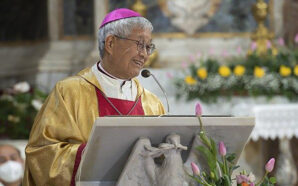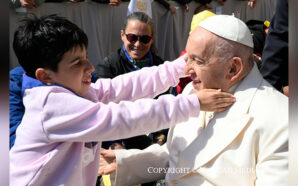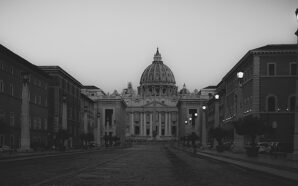It is helpful to remind ourselves as we pray the Creed that the images of God’s transforming Holy Spirit are wind and fire. That is the incredible personal presence we have inside each of us. This is the power through which God became one of us in Palestine and then fills the disciples’ hearts at Pentecost with courage and creativity.
Since our baptism, it is the same powerful force that, like a wind, blows all the cobwebs of sin and selfishness away and that burns down all barriers we erect against living our Christian life.
It is worth recalling that, in modern life, wind and fire are two of the very things we take insurance against! No wonder then that we often conveniently forget the critical role the Spirit must have in our lives as disciples of Jesus of Nazareth. Most of us prefer to protect ourselves, with great stubbornness, from such change and conversion.
Christians, however, were alive to this sense of the power of the Spirit in the first century. Their joy and enthusiasm can often seem missing in the contemporary Church. Sometimes it seems we have lost our nerve and our sense of direction and have turned the divine initiative into a human enterprise.
Thank God it does not all depend on us! Rather it depends on our openness/receptivity to what the Holy Spirit is already doing among us.
That is why I like J.V. Taylor’s book on the Holy Spirit, The Go-Between God. It is the best I have ever read on the Holy Spirit. For Taylor, the Spirit is literally the ‘Go-Between God’, the bond between the Father and the Son, and the One through whom they are present to us.
Taylor makes the Spirit come alive through describing how the Holy Spirit works in the ‘nitty-gritty’ of personal relationships in daily life. The Spirit does this by helping people to see other individuals as entirely ‘other’ from them; by helping people to realise that the other persons they encounter see the world through entirely different lenses shaped by their own experiences.
Drawing heavily on Martin Buber’s I and Thou, Taylor’s main point is that the Holy Spirit primarily works as a ‘go- between’. In other words, when individuals meet and converse, the Spirit is not merely ‘in’ each of the individuals, but is his own personality working between them. If life were a drama, the Holy Spirit would be a separate character with his own personality.
To use Taylor’s analogy, if a conversation between two people were represented by the equation 1+1, the Holy Spirit would be the ‘+’.
Taylor explains ‘To live in prayer, therefore, is to live in the Spirit; and to live in the Spirit is to live in Christ … to live in Christ is to live in prayer. Prayer is not something you do; it is a style of living.’
A ‘style of living’ that Taylor illustrates in one ordinary but very beautiful experience of the Holy Spirit.
He describes a West Indian woman in London, who in her flat had just received the news that her husband had been killed in a street accident. She sat in the corner of the sofa, paralysed. Nobody could get near to her; it was as if she were in a trance. And then the teacher of one of her children came in, saw the situation in a moment and sat down beside her, and put her arm across her shoulders and held her tightly. The white face was pressed to the brown one. And as the intolerable pain of this seeped through to the visitor, her tears began to fall, on to their hands clasped in the woman’s lap. This went on until the grieving woman herself began to weep, and their tears were mingled, and the healing began.
Taylor’s comments: ‘That is the embrace of God. That is his kiss of life. That is the embrace of his mission with our intercession. And the Holy Spirit is the force in the straining muscles of an arm; the Holy Spirit is in the thin film of perspiration between a white cheek and a brown one. The Holy Spirit is in those mingled tears falling on to those clasped hands. He is as close and as unobtrusive as that, and as irresistibly strong.’
The Holy Spirit then is the invisible third party who stands between me and the other, making us mutually aware. The Spirit opens our eyes to Christ and also opens our eyes to our brothers and sisters in Christ—especially the poor.
More than ever, inside and outside the Church, we all need to be on the lookout for the presence of this ‘Go-Between God’.
Come Holy Spirit!
Br Mark O’Connor FMS is the Vicar for Communications at the Diocese of Parramatta.








